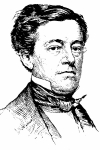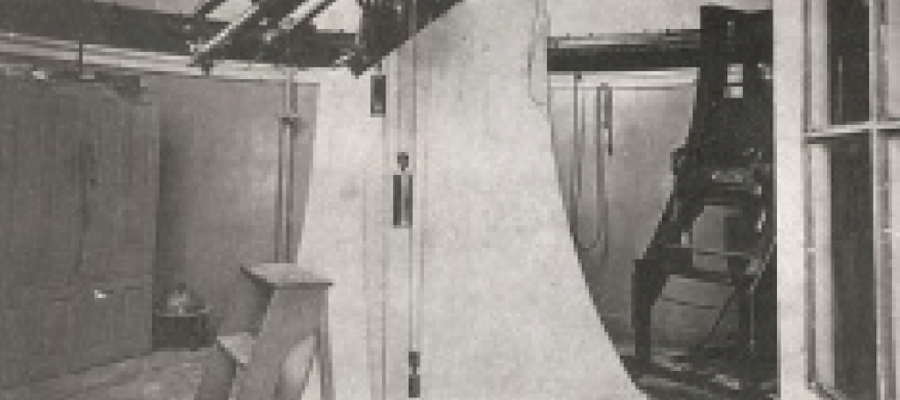 I have previously written about scientific equipment built on Capitol Hill, as well as how the shops of the Navy Yard were used for non-Naval purposes. What I did not realize –until I came across an article in the Washington Evening Star of March 29, 1854– was that these two things had come together at one point.
I have previously written about scientific equipment built on Capitol Hill, as well as how the shops of the Navy Yard were used for non-Naval purposes. What I did not realize –until I came across an article in the Washington Evening Star of March 29, 1854– was that these two things had come together at one point.
The National Observatory – an institute dedicated to improving our knowledge of the universe around us, though mainly to help out the Navy– was founded in 1841. However, as early as 1825, President John Quincy Adams had argued for the building of such a “lighthouse of the sky.” It was located west of the White House, on a bluff overlooking the Potomac River.
Three years later, Merz & Mahler of Bavaria delivered a 9.6-inch telescope that would be installed at the observatory. The only problem was that it was not easy to arrange yourself in such a way as to look through the eyepiece of the telescope. J. Melville Gilliss (pic), the Lieutenant in charge of the Observatory, designed a chair that would swing around the telescope. The chair was built by an Alexandria firm. Apparently, there were issues with it. Ten years later, when a new type of chair was called for, it was the machine shop at the Navy Yard that answered the call. The Star described the “ingenious contrivance” thusly:
It consists of an adjustable chair, so made, that the astronomer while seated in it can alter with great facility his position, to suit any angle at which the telescope may be adjusted. It is worked by means of a handle within reach of the occupant, which, by turning a screw, gives motion to a pinion wheel that gears into a curved rack. As the weight of the chair and occupant are counter-balanced, a slight exertion only is sufficient to raise the chair to any height, and by means of casters n the legs, it runs easily around a double circular track, so that both a horizontal and a later change of position can be obtained when desired.

A detail of a picture showing, behind the door, the adjustable chair. The eyepiece for the telescope can be seen on the upper left. (astronomy.com)
The telescope and its attendant adjustable chair were key in making the Naval Observatory an international hub of scientific inquiry. This went on until 1873, when the telescope was replaced by a 26-inch version. During the Civil War, between the Battle of Gettysburg and his famous speech on that battlefield, none other than Abraham Lincoln stopped by to examine the heavens. John Hay, his secretary, laconically remarked in his diary that the staff at the observatory were “kind and attentive.” Lincoln “took a look at the moon and Arcturus.”
The Naval Observatory was moved in 1893 to its present location on upper Massachusetts Avenue NW, and the 26-inch telescope is still in use. The older variant was purportedly melted down during the first world war for its brass, while its objective lens survives in the collection of the Smithsonian.
The Navy Yard’s contribution is long gone and no record of its demise was recorded.
